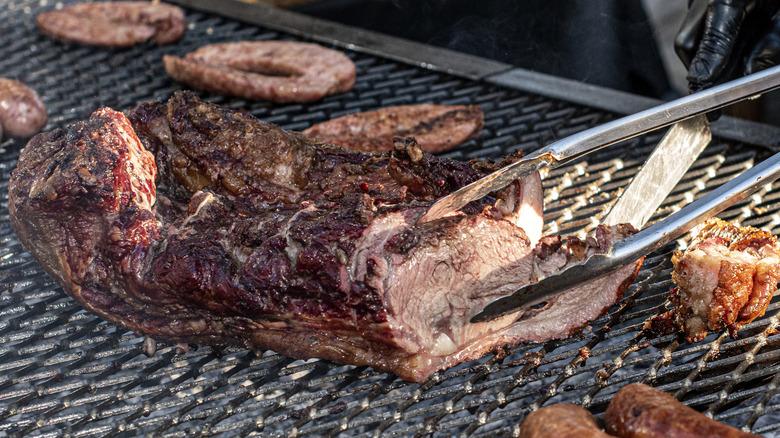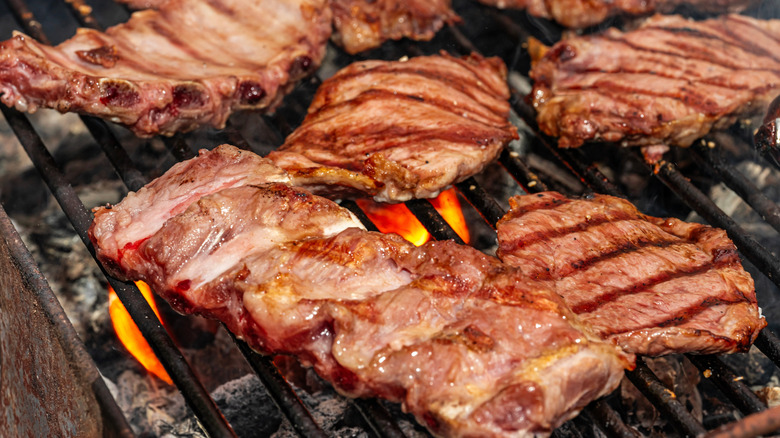The Country That Eats The Most Beef Is Swapping It For Pork
From empanadas to alfajores, many Argentine dishes have become globally renowned. Yet if there's one foodstuff that intertwines especially strongly with the nation's cuisine, it's beef. Indeed, not only does the South American nation consume a larger quantity than meat elsewhere, but Argentina steaks are some of the best quality around, too.
The dining preference weaves deep into the country's cultural fabric: Cow ranchers called gauchos are regarded as folkloric heroes and asados — convivial barbecues — are a weekly pastime. So with such cultural prominence, it's shocking that beef sales are declining. In fact, The Washington Post reports that in 2024, beef consumption hit a new historic low. Instead, Argentinians are increasingly swapping in pork for their barbecues and daily meals.
Such a predisposition for the new meat comes by way of several factors. Perhaps most relevantly, it's economics. Over the last several years, the country has struggled with inflation, which has drastically reduced consumer's spending ability. As a result, beef — especially quality steak — became less affordable. Furthermore, although Argentina is a major cattle producer, beef exports accelerated, making steaks a less accessible domestically. Subsequently, pork emerged as a substitute that still tastes delicious on the grill. However, other cheaper products like poultry and chorizo aren't experiencing the same growth, so there's a more cultural side at play, too.
Argentinians are increasingly making pork centerpiece in their meat-heavy diet
Pork isn't a newfound addition to Argentine cuisine. At an old-fashioned parrilla — a ubiquitous neighborhood barbecue restaurant — it's not unusual to find the protein on the menu. Grilled cutlets and braised shoulder are common steakhouse options. Mouth-watering pork-based sausages like morcilla, chorizo, and salchicha parrillera are also widespread. There are more intricate, yet still classic Argentine dishes like Costillas a la Riojana: Pork chops cooked in an aromatic pea and pepper sauce, and topped with a fried egg.
So it's not that Argentinians aren't familiar with pork, it's just that the foodstuff didn't occupy the center stage like beef. Thick steaks and braised beef of all cuts and sizes have long dominated as the focal point of a meal, with only pork side options. And a side of chimichurri (not to be confused with pesto) is served as an aromatic accompaniment for specifically beef — evincing many facets of the cuisine tailor red meat.
In part, pork took backstage due to its reputation: It used to be regarded as bland alternative to beef. However, new butchering practices, nomenclature, and adjusting tastes have made diners reconsider it. Flavorful pork steaks can now replicate — or at least come close — to the satisfaction of beef on a charcoal grill. And so, there's an uptick in sales; even if pork likely won't ever become the sole asado option, it more often shares the grill with its beef counterpart.

